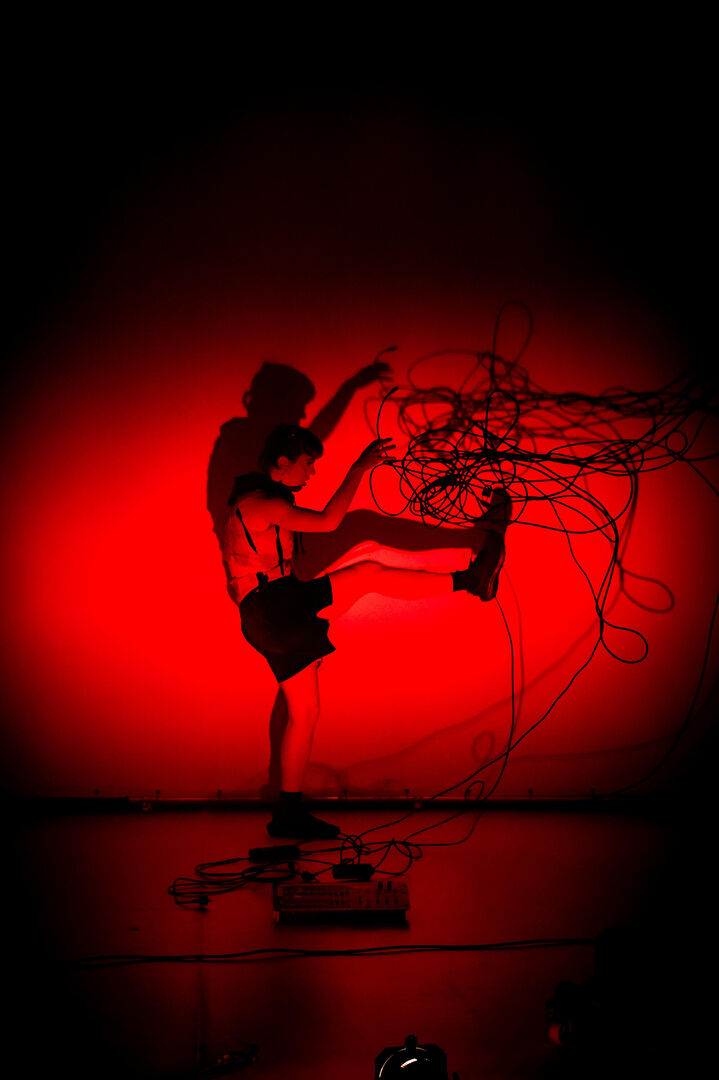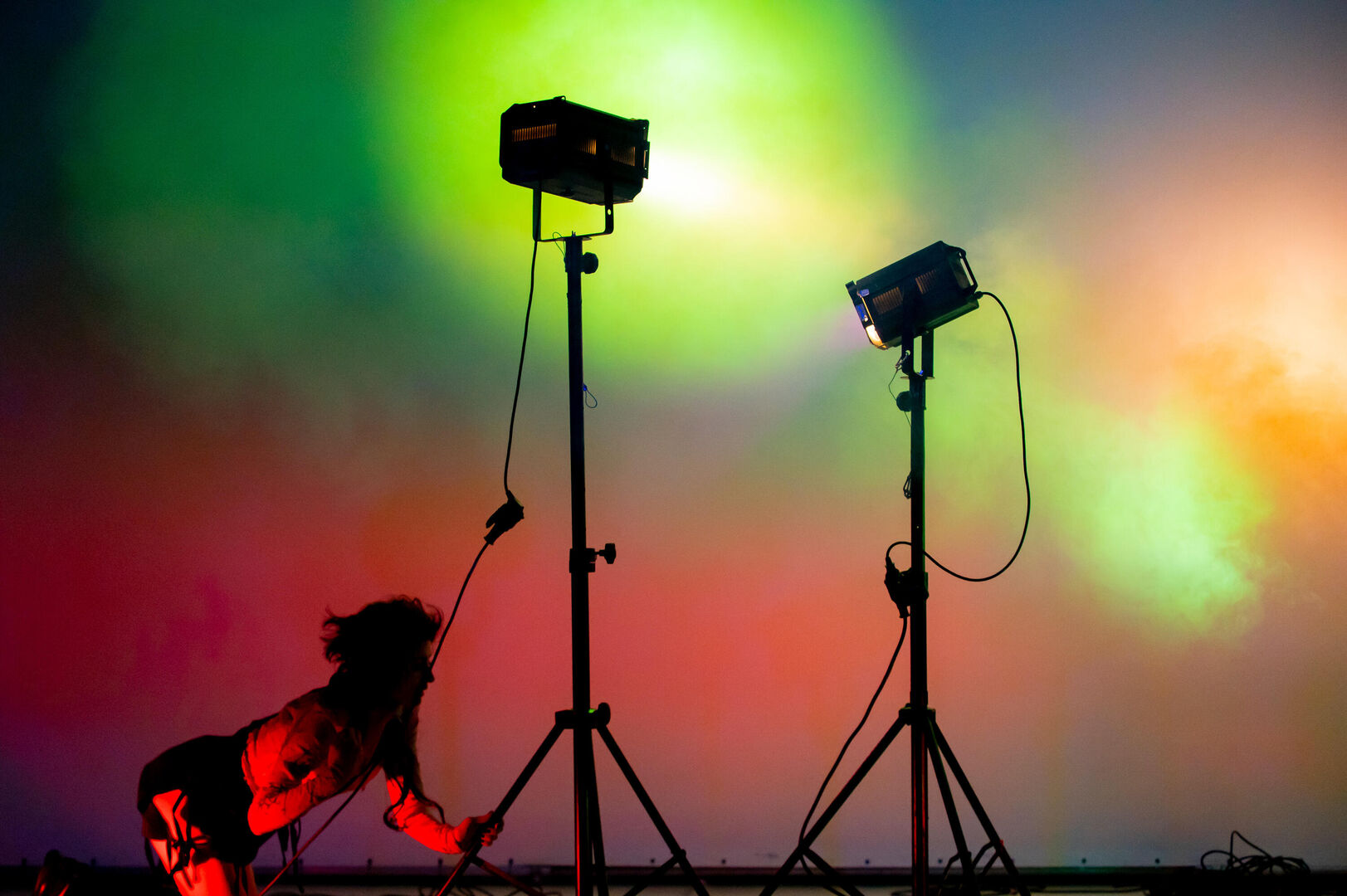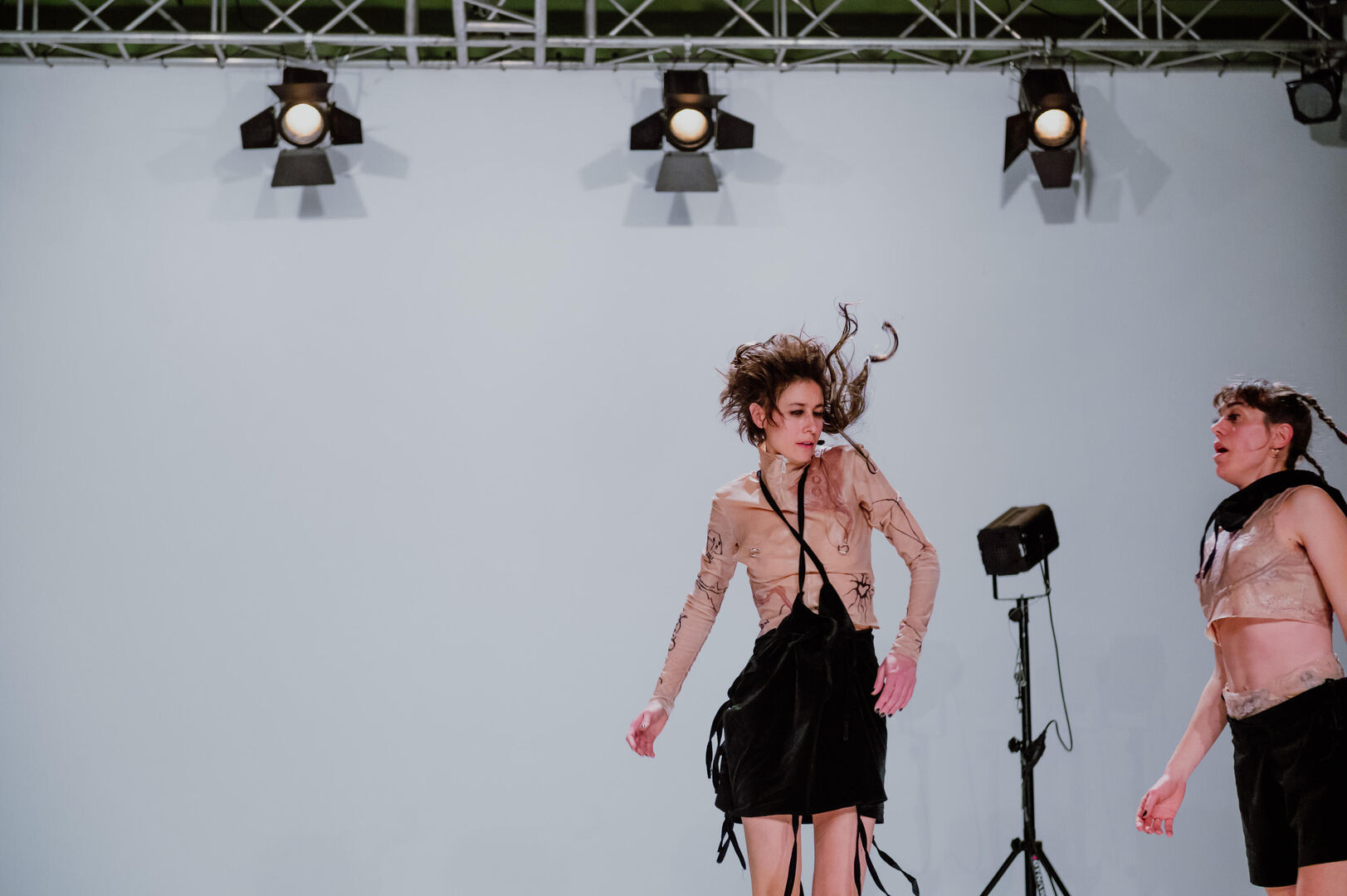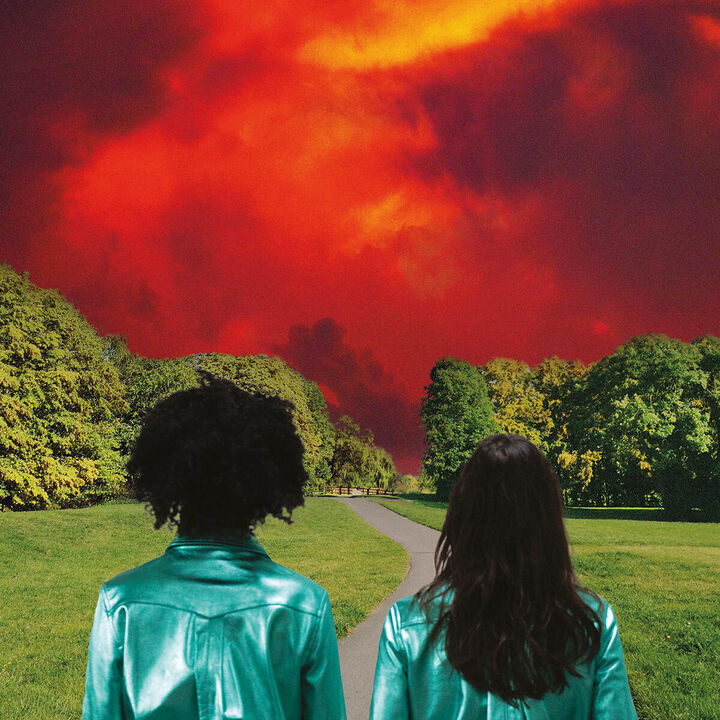
Call me Jay is a pas-de-trois between two dancers and a moving LED light. It is a duet that becomes a trio, a choreography where roles shift, and the lines between human and non-human blur. Who leads, who follows, and who truly has control?
Amidst cables and old-school lamps, the performers navigate a space of interconnection and negotiation. One dancer moves with their own physicality, the other remotely operates the light—yet the light itself seems to have a will of its own. It responds, resists, obeys, and surprises, transforming from object to partner, from machine to collaborator.
This piece plays with different modes of control—direct, indirect, visible, and hidden. The dancers and the moving light engage in a delicate game of imitation, amplification, manipulation, and improvisation. They explore the materiality of their surroundings, allowing friction, fragility, and spontaneity to shape the choreography.
Beyond the technical elements, Call me Jay is an invitation to imagine new ways of coexisting with technology. As traditional stage lighting disappears from theatres, what other relationships between humans and machines could emerge? What happens when we stop seeing technology as a tool and start seeing it as a creative partner?
Through poetic images woven from the simplest materials, Call me Jay invites the audience to reflect on collaboration beyond the human. What new constellations of movement, presence, and influence can we create—together?
Jay: A common given name, a nickname for many names starting with ‘J’—but also a brightly coloured, noisy bird from the Corvidae crow family.
Call me Jay is a pas de trois for two dancers and a LED light machine.
It is a dance piece among cables and old-school lamps.
It is a duet that that turns into a group piece.
It is a piece in which different modes of control are being tested.
It is a game in which it is not clear who is under who’s influence.
It is a choreography in which an object becomes a robot, becomes a partner, becomes a mover, becomes a light, becomes a lover, becomes an inspiration source.
It is a dance piece in which stories without words are being told and poetic images are emerging from basic, technical materials.
It is a piece that invites the audience to fantasize about coexistences and unusual human-technology entanglements.
Agata Maszkiewicz is a Polish choreographer and performer based in Charente, France, working across Europe. A graduate of the Institute of Dance Arts in Linz (2009) and the ex.er.ce program at CCN Montpellier (2007), Agata has collaborated with Superamas, Ivana Muller, Anne Juren, and others. Her choreographic work integrates bodies, objects, texts, and images to create hybrid stage forms that merge distant ideas, often employing humor to make complex propositions accessible. She is deeply invested in creating movement within specific contexts, challenging traditional formats to offer unexpected, often bizarre, mixtures. Agata’s commitment to dance lies in making it intriguing, unpredictable, and thought-provoking.
Emma Tricard is a Marseille-based choreographer, dancer, and researcher, whose work explores the intersection of "saying" and "doing". Trained with Maguy Marin and at HZT-Berlin and ICI-CCN Montpellier, Emma's research focuses on the relationship between movement, thoughts, and natural phenomena. Her pieces—ranging from theater works to audio walks—are often speculative, engaging with science fiction and future tensions. Emma collaborates with various artists, including Joanne Clavel on research-creation in Environmental Humanities, and has premiered works such as Le Débordement / Die Ausschreitung (2022). As a performer, she works with Cie L’Unanime, Sergiu Matis, and more, also contributing to Betty Tchomanga's work as outside eye and assistant.
Séverine Rième is a performer, choreographer, light designer, and poet. She began her career as a dancer in 1998, later extending her practice to light design and choreography. Séverine’s work blends movement, voice, and visual art, investigating the porous boundaries between life and inanimate matter, identity, and multiplicity. Her approach incorporates a tactile and organic perspective on stage lighting, and her research explores the intersection of body and form. Séverine's creative practice is evolving, with her poetry gaining prominence. Her first collection, Nos soifs, was published in 2024, marking an important development in her artistic journey.
Antoine Tirmarche is a composer and electroacoustic artist who creates experimental soundscapes for the stage, particularly in collaboration with Agata Maszkiewicz. Trained in jazz, orchestral, and electroacoustic composition, Antoine's work emphasizes the interaction between sound, silence, and movement. His compositions blend recorded and synthetic sounds, ranging from subtle to overwhelming, creating a dynamic dialogue with the body and stage design. Antoine is particularly drawn to unconventional approaches to sound, challenging traditional boundaries and exploring the emotional and physical impact of sound within performance contexts.
Vincent Tirmarche is a founding member of the SUPERAMAS collective, known for its "unclassifiable" works that blend critical reflections on contemporary society with formal theatrical and media experiments. His artistic approach questions the boundaries between reality and fiction, aiming to challenge the audience’s perceptions and beliefs. Vincent’s long-term collaboration with Agata Maszkiewicz is rooted in a shared vision of art as a tool for social reflection. Their works prioritize critical dialogue over aesthetic goals, seeking to provoke thought and critique societal norms, offering a sharp, incisive lens on the world.
Co-financed by the Ministry of Culture and National Heritage. Co-organized by the Adam Mickiewicz Institute as part of the international cultural program of the Polish Presidency of the Council of the European Union 2025.
See more of SPRING in Theater Kikker










